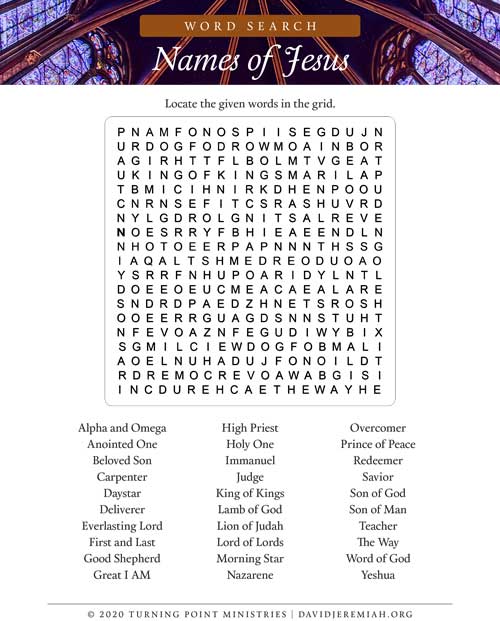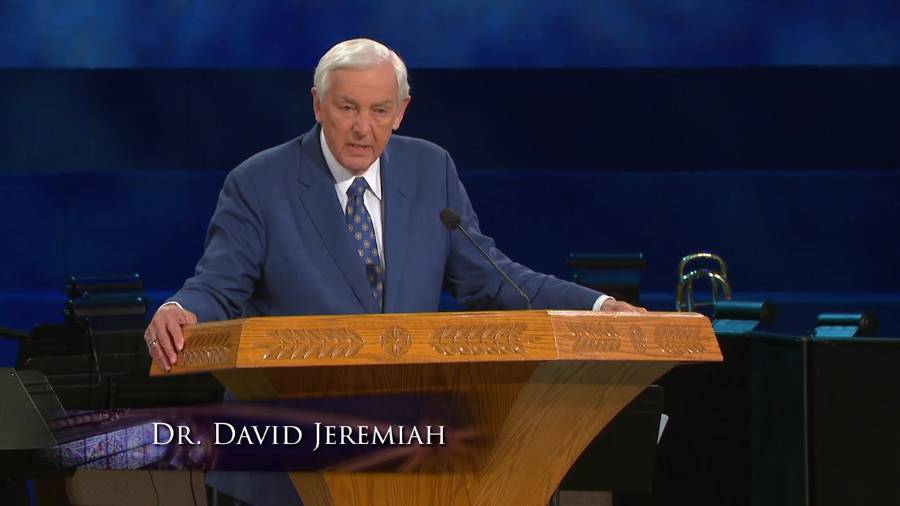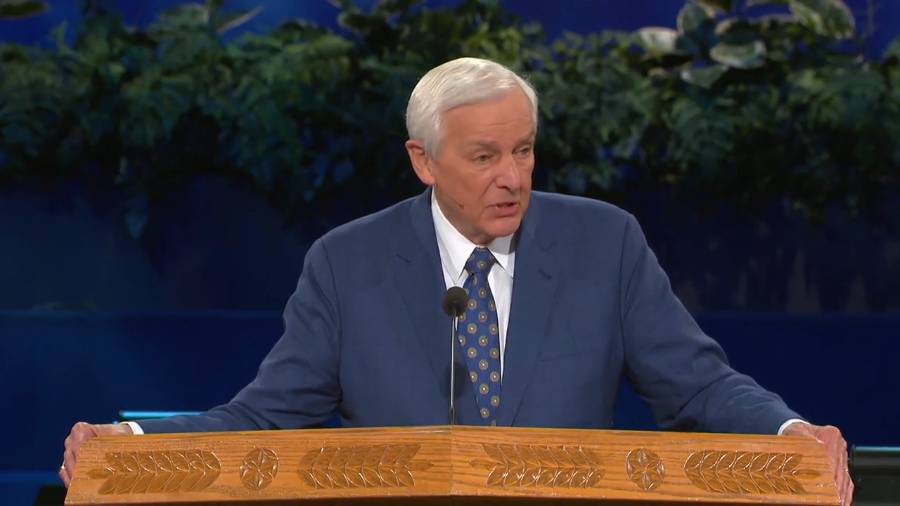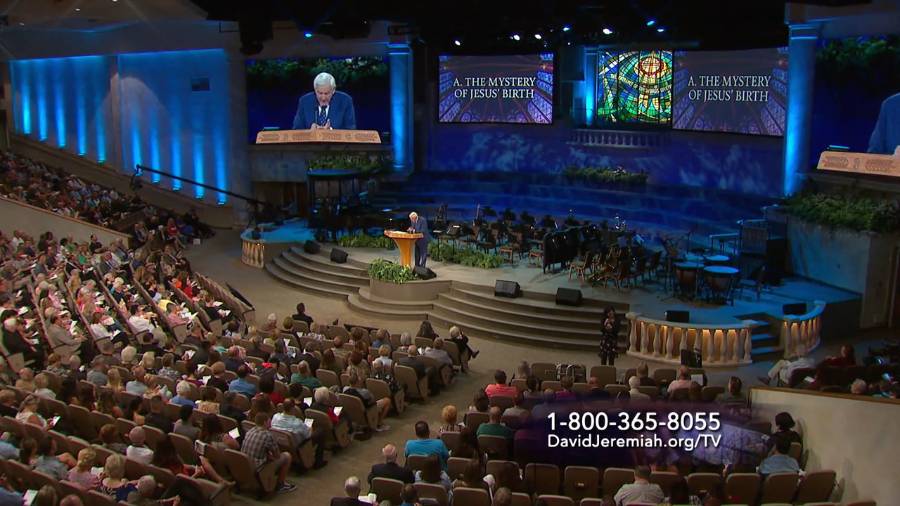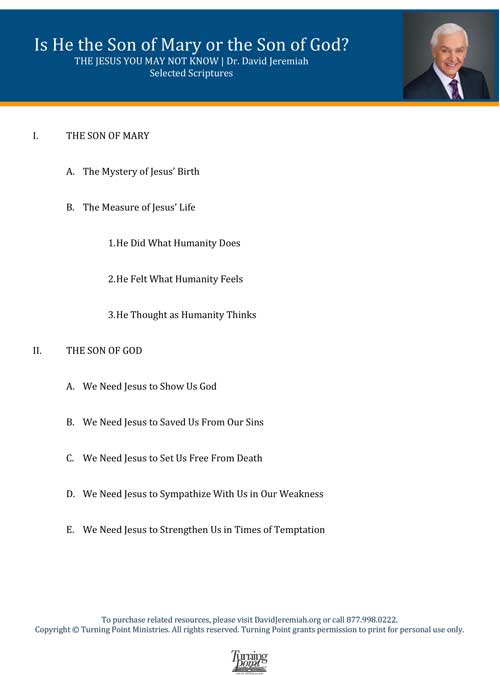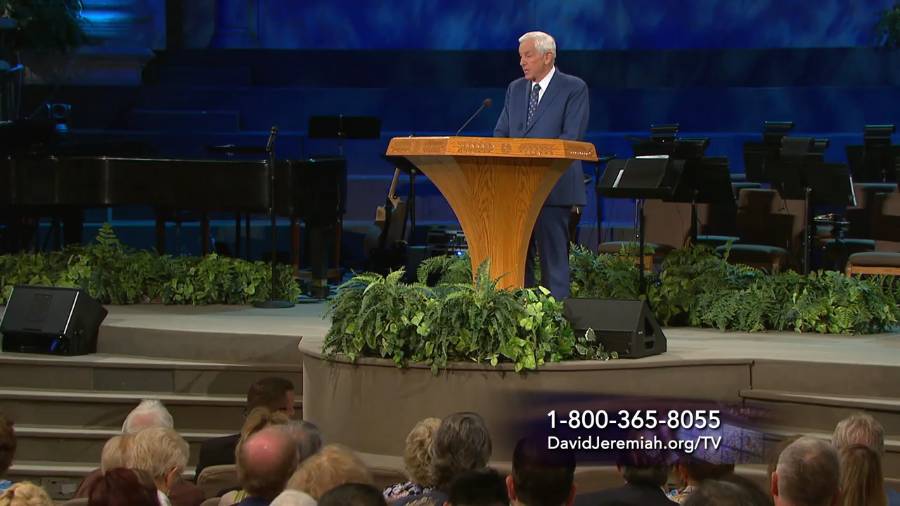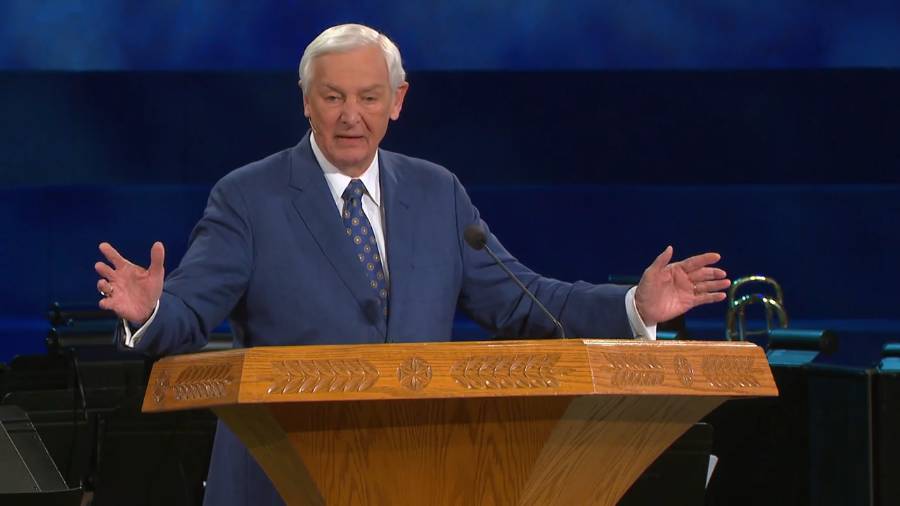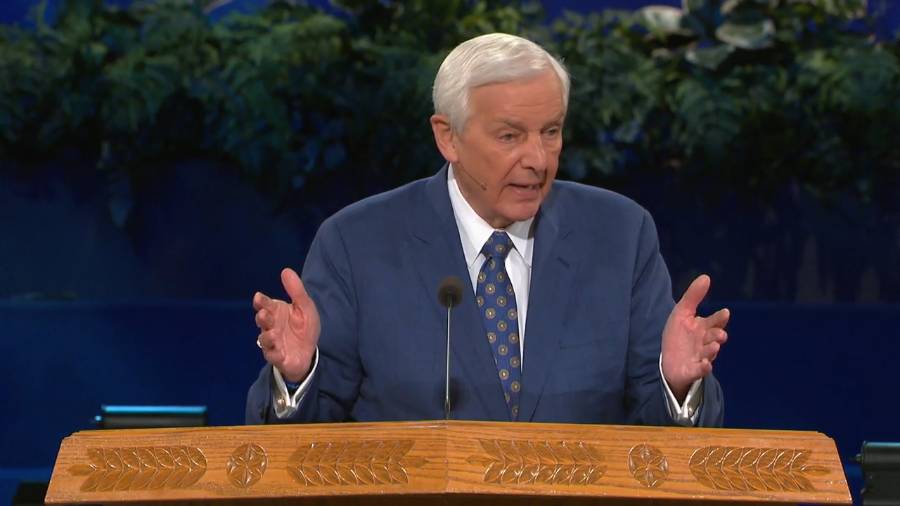The Jesus You May Not Know
Learn toFathomJesus like never before
Resources from David Jeremiah to aid in your journey from knowing about Jesus to knowing Jesus.
Is He the Son of Mary or the Son of God?
Thanks for downloading your free resource!
Thanks for downloading your free resource!
Thanks for downloading your free resource!
Thanks for downloading your free resource!

Reading His Palms
By David Jeremiah
When an earthquake destroyed San Francisco in 1906, a young entrepreneur named Sid Grauman salvaged a movie projector from a collapsed theater. He acquired a tent from an evangelist, along with pews from a destroyed church. Opening a makeshift theater, he used the slogan: “Nothing will fall on you but canvas if there is another quake.” His venture was successful, and some years later he moved to Hollywood and built a more substantial theater using flamboyant Chinese themes.
Grauman’s Chinese Theater opened on May 18, 1927, and it’s still an iconic landmark on Hollywood Boulevard. Every movie buff knows that the courtyard of the theater represents the most famous autograph collection in history. About 300 of the greatest stars of the big screen have pressed their hands and feet into squares of concrete, along with their finger–inscribed names.
There are various stories about how the custom began. Most accounts claim actress Norma Talmadge accidentally stepped into the wet concrete at the construction site. Others say Mary Pickford made the misstep. Grauman once told a radio interviewer he’s the one who unwittingly stepped into the concrete. Trivia enthusiasts debate the subject, but no one can win the argument hands down.
Palm Prints Are Personal
What is certain is that palm prints are very personal. From children who put their hands into plaster to spies who press their palms against scanners, a person’s palm print is unique. The modern practice of recording handprints goes back to 1858 when Sir William Herschel was working for the Civil Service in India. He had each worker press a handprint onto the back of his or her contract for identification.
Since the 1990s, palm prints have been increasingly important in police work. Criminals have been convicted based on palm prints even when no fingerprints were legible. ATMs in Japan now use scanners that detect not just the prints but also the veins and bones in the palm to identify their customers.
Jesus’ Palm Prints Prove His Love
What if we had a copy of the palm prints of Jesus of Nazareth? What if we had a concrete mold of His hands? The Gospels often speak of Christ putting out His hand to touch someone. In Matthew 19:13, children were brought to Him so He could put His hands on them and bless them. The people of our Lord’s day marveled that “such mighty works are performed by His hands” (Mark 6:2).
After the resurrection of Christ, Thomas said, “Unless I see in His hands the print of the nails … I will not believe.” Shortly afterward Jesus appeared and told Thomas, “Reach your finger here, and look at My hands” (John 20:25–27).
Based on that passage, hymnist Fanny Crosby wrote a famous gospel song that affirmed that thought with the lyrics “I shall know Him, I shall know Him, by the print of the nails in His hand.” One day we’ll see Jesus face–to–face. But even without seeing His face or His features, we will know Him by His hands. Isaiah 49:16 says, “See, I have inscribed you on the palms of My hands.”
Our Lord’s rough hands—the hands of a workman, a carpenter—say so much about His life and mission.
Jesus didn’t just say He loved the world; His nail–scarred palms proved it. He put His love into action. And when He ascended to heaven, He handed off the task to us.
When it comes to loving and serving others, we’re to be active with godly words and good deeds. James 2:14 warns, “What does it profit, my brethren, if someone says he has faith but does not have works?” James exhorts us to clothe the naked and feed the hungry. You can tell a working man by his hands, and you can spot a Christian by reading his palms.
Our Palms Spread His Love
It’s not enough to sit in church on Sunday and soak up songs and sermons. We need a personal action plan to do something for others, to meet the needs of another person in Jesus’ name, to use our hands and feet to share the Gospel in word and deed. It starts where we are, with the people near at hand. Our friends and neighbors have needs. Our churches beg for volunteers. Our towns and communities have organizations to offer a helping hand to those in need.
Even if you have your own set of limitations, there’s something you can do for Christ.
In her book Ordinary People, Extraordinary Faith, Joni Eareckson Tada tells of Mary Jane Ponten who was born in 1930 with a serious disability that was called “spastic paralysis” at the time. Today we call it cerebral palsy. Her parents were dedicated Christians who were undaunted by difficulty. They trusted the Lord, prayed, and went to work with physical and speech therapists. Mary Jane responded with a determined spirit. She learned to walk, to ride a bicycle, to drive a car, and to speak with enough clarity to be understood. As a young person she felt God was calling her as a missionary to China, but she later realized no reputable missions organization would send someone with cerebral palsy to China—or to anywhere else as a missionary.
Sweaty Palms and Physical Limitations
Mary Jane married Bud Ponten, a man who also battled cerebral palsy, and they served the Lord together for many years. After Bud passed away in 1990, Mary Jane wondered, “What now?” Though in her sixties, she still wanted to serve the Lord in missionary service. After much thought and prayer, Mary Jane helped establish Mephibosheth Ministry, an organization designed to present God’s Word and His love to people around the world who face physical and mental challenges.
Despite her limitations (Mary Jane also battles arthritis and osteoporosis), she began traveling to many nations (including China) speaking in churches and training pastors to reach out to the disabled. Mary Jane distributes wheelchairs all over the world and advances the cause of reaching the disabled in North and South America, Africa, Europe, and Asia. She has ministered in Cuba, Ghana, and in other challenging parts of the world.
“No one has ever been able to convince me that I am handicapped,” says Mary Jane. “I have a physically handicapping condition called cerebral palsy. I look funny. I walk just a bit off–beat. I talk really weird. Fortunately my mind has not been affected.” Nor has her passion for missions. During a period in life in which most people retire, Mary Jane has worked in 16 countries, making more than 40 ministry trips and is still going strong in her eighties.1 She’s not afraid to get her palms sweaty for the Savior.
Putting Our Palms to Work for the Kingdom
We’re the hands of Jesus to a lost world, and “missions” is more than what happens on Sunday.
We need to take every opportunity every day to stick our hands into the cement of the world and leave a legacy—which brings me back to Grauman’s Chinese Theater. All of Hollywood turned out on that opening night, May 18, 1927, when the doors opened and a major motion picture premiered. The stars and starlets of the silent film era walked across the red carpet with flashbulbs popping and tourists gawking from the sidewalks.
Can you guess the name of the movie that premiered at Grauman’s on opening night? It was Cecil B. DeMille’s epic story about the life of Christ, The King of Kings. The accompanying brochure said: “AT NO TIME in the World’s history has humanity so hungered for the Truth. Science has declared there is a God. And a groping, eager World cries, “How may we find Him?”2 The film was preceded by a live musical recitation of biblical passages entitled “Glories of the Scriptures.”
Perhaps DeMille’s intentions were good; but Hollywood can never really share the King of kings with the world; and unfortunately, it’s been a long time since Tinseltown appreciated the glories of the Scripture. But humanity is still hungering for the Truth and a groping, eager world cries, “How may we find Him?”
Let’s press our hands to the task, recognizing that every day is Palm Sunday. Let’s be His missionaries to all around us. Let’s be the hands of the King of kings in a world of need.
1Joni Eareckson Tada, Ordinary People, Extraordinary Faith (Nashville: Thomas Nelson, 2001), 139–153, with additional information from http://www.mephiboshethministry.org
2Simon Louvish, Cecil B. DeMille (New York: St. Martin’s Press, Thomas Dunne Books, 2007), 258.
This article is adapted from the April 2013 issue of Turning Points Magazine and Devotional, a ministry of Turning Point with Dr. David Jeremiah. Request your complimentary subscription today.







